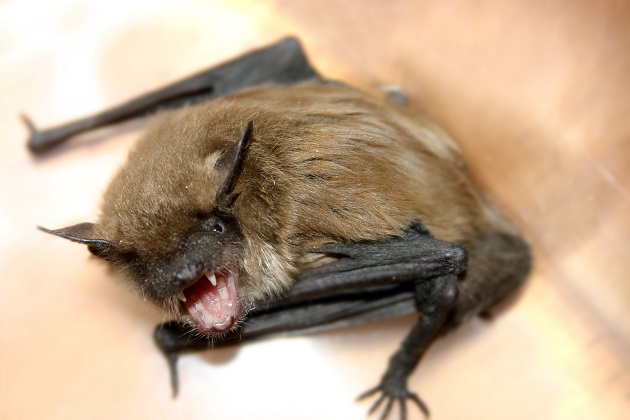| Breed | Name | Color | Height/Weight | Sex | Date Deemed Dangerous |
|---|---|---|---|---|---|
| Village of Bronxville | |||||
Shiela and Murray Stoltz 6 Lee Place Bronxville, NY 10708 |
|||||
| Bulldog | Stanley | Brown | Male | 7/8/2020 | |
| South Salem | |||||
Susan & Frank Andrade 139 Main Street South Salem, NY 10590 |
|||||
| Lab Mix/Akita | Zayne | Tri Color: Brown/ silver/white |
Med-Large | Male | 4/23/2021 |
| Scarsdale | |||||
|
Lynne & Neal Dorf |
|||||
| Wheaton Terrior Mixed Breed |
Jake | unavailable | Male | 6/10/2016 | |
| White Plains | |||||
|
Matthew Purpura |
|||||
| Great Dane | Hank | Black | 150 lbs. | Male | 3/11/2019 |
Rabies Alert!
An indoor/outdoor cat that resided in Katonah died on Wednesday, May 7th, 2025 and subsequently tested positive for rabies. Cat was a white tabby of average size.
If you, a family member, or your pet may have had any contact with this cat, immediately call the Westchester County Department of Health at (914) 813-5000.
Anyone bitten by a rabid animal or having had contact with its saliva may need to receive post-exposure rabies treatment. When administered early enough, before symptoms develop, the treatment is 100% effective. Once symptoms occur, in humans or animals, the disease is fatal. To protect yourself from rabies, NEVER feed, handle or approach wild or stray animals.
 Bat encounters are concerning because a bite or scratch from a bat can be difficult or impossible to see. That's why it is important that everyone be educated about rabies in bats, and what to do if you find a bat in your home.
Bat encounters are concerning because a bite or scratch from a bat can be difficult or impossible to see. That's why it is important that everyone be educated about rabies in bats, and what to do if you find a bat in your home.
Got a bat in your house? Don’t panic.
If there’s a chance that a person or pet in your house had contact with a bat, the most important thing to do is capture that bat. If the bat can be caught, it will be sent for rabies testing. If the bat is not rabid, the person or pet who was exposed can avoid rabies shots. If the bat is rabid, life-saving vaccines must begin soon.
How to Capture a Bat
To learn how to safely capture a bat, watch this 80-second video. You’ll need a coffee can, a stiff piece of cardboard and a bit of bravery:
- Turn on room lights and close the windows.
- Close the room and closet doors.
- Wait for the bat to land.
- Wearing leather work gloves, place a coffee can, pail or similar container over the bat.
- Slide a piece of cardboard under the container to trap the bat. Firmly hold the cardboard in place against the top of the container, turn it right side up and tape the cardboard tightly to the container.
Once you have caught the bat, call the Westchester County Department of Health at 914-813-5000 to learn what to do next.
If you are absolutely certain that no person or pet was exposed to the bat because you saw the bat fly into your house and never lost sight of it, you can close the room and closet doors, open the windows and watch the bat until it leaves. You can also call a Licensed - Registered Trapper or your local police department/animal control officer for help.
Avoid Contact with Bats:
Bats often roost in attics or barns, but they can also be found inside closed patio umbrellas. To avoid exposure to bats, secure doors and windows and close off any small openings that will allow an animal entrance into your home. This includes screening, chimneys, attic vents, and air conditioners.
Other Resources:
- Bats and Rabies (CDC)
 Rabies is a preventable viral disease of mammals most often transmitted through the bite of a rabid animal, but can also be spread by scratches and contact with an infected animal's saliva.. The rabies virus infects the central nervous system, ultimately causing disease in the brain and death. All dogs, cats and ferrets that are four (4) months of age or older and reside within Westchester County are required to be vaccinated against rabies.
Rabies is a preventable viral disease of mammals most often transmitted through the bite of a rabid animal, but can also be spread by scratches and contact with an infected animal's saliva.. The rabies virus infects the central nervous system, ultimately causing disease in the brain and death. All dogs, cats and ferrets that are four (4) months of age or older and reside within Westchester County are required to be vaccinated against rabies.
You cannot be certain that an animal has rabies just by looking at it. Animals with rabies sometimes become aggressive, foam at the mouth, or have seizures. They may attack people, other animals or objects. Rabid animals may act confused or disoriented, show signs of paralysis, and make hoarse vocal sounds. Wild animals that act tame, friendly or allow you to get close to them may also have rabies.
Rabies Prevention
Rabies can be prevented by:
- Avoiding contact with wildlife, stray animals or unknown pets.
- Bat-proofing your home.
- Vaccinating your pets (the County holds three FREE Rabies Clinics per year).
- Keeping your dog on a leash and under direct supervision outdoors.
- Keep your cat indoors.
- Spay and neuter your pets to help reduce the number of unwanted pets that may not be properly cared for or vaccinated regularly.
- Not providing food or shelter for wildlife.
What to do if you are Bitten:
If you are bitten, scratched or have some other exposure to a potentially rabid animal, immediately wash the area with warm soapy water and call your doctor or hospital for medical advice.
Report animal bites and other exposures (including scratches). All animal bites are required by NYS Public Health Law to be reported to the local or County health officer as soon as possible.
Call the Westchester County Health Department at (914) 813-5000 24 hour a day, 7 days a week for assistance. Have your healthcare provider or emergency room staff fax a completed bite report form to (914) 813-5160. The bite report form is available for download.
Rabies Post Exposure Treatment:
Rabies post exposure treatment will be considered if the animal:
- is found to be rabid
- is not available for testing
- was untestable
- had contact with a person where a bite or scratch or contamination of any open wound or mucous membrane (eye, nose, mouth) could not be ruled out. For bats, a bite may be difficult or impossible to detect.
Or, if the person cannot say for sure if they were not exposed because he or she:
- is a young child
- was asleep
- was under the influence of drugs or alcohol
- has a sensory or mental impairment.
Other Resources
- Rabies Information (CDC)
- Rabies Information (NYSDOH)
- Coyote Conflicts (Encounters, Protect your pet) NYSDEC
Animal Bite/Contact Forms (Rabies)
- Report of Bite/Scratch/Contact Form (fillable pdf)
- Affidavit of a Biting Scratching Animal (fillable pdf)
Medical Provider Rabies Guidance
Medical Provider Required Reporting Forms



